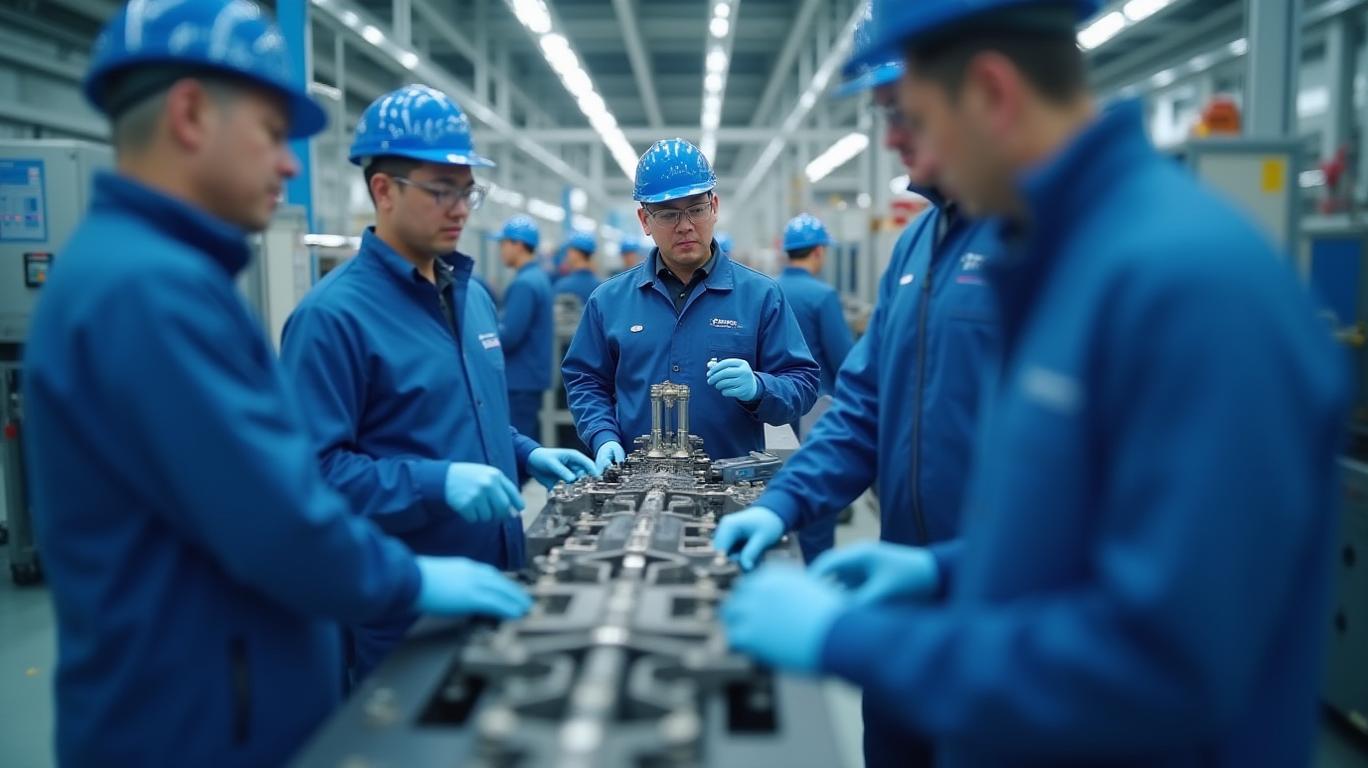AInvest Newsletter
Daily stocks & crypto headlines, free to your inbox
Exco Technologies Limited’s Q2 2025 results highlight the fine line between resilience and fragility in an industry buffeted by trade wars, shifting demand, and macroeconomic headwinds. While the company eked out modest sales growth, its profit margins were squeezed by restructuring costs, tax pressures, and operational disruptions. Yet, beneath the surface, there are glimmers of strategic progress—and risks that could define its future.
Exco reported consolidated sales of $166.1 million for Q2 2025, a 1% increase from the prior-year period. This tepid growth was flattered by $8.8 million in favorable foreign exchange impacts, masking underlying weakness. Net income plunged 21% to $6.4 million, largely due to $2.0 million in restructuring charges and a sharply higher tax rate (33.7% vs. 22.8% in 2024).
EBITDA fell 7% year-over-year to $19.7 million, but management argued that excluding restructuring costs, disruption expenses, and lower FX gains, EBITDA would have risen 13%. This adjustment underscores the short-term pain of long-term bets—like automation and lean manufacturing—meant to stabilize margins.

Automotive Solutions Segment: Sales dropped 3% to $82.9 million as weaker automotive production and inventory destocking weighed on demand. While North American auto sales (SAAR of 17.7 million units) provided a partial offset, global tariff uncertainty and recession fears loomed large. Pretax profit fell to $7.8 million, though restructuring in Mexico—aimed at curbing rising labor costs—suggests Exco is preparing for a post-tariff world.
Casting and Extrusion Segment: Sales rose 7% to $83.2 million, driven by strong extrusion tooling demand and FX gains. However, die-cast tooling faced headwinds from automotive production delays and geopolitical risks. Pretax profit slumped to $4.5 million due to restructuring costs, though underlying profitability improved slightly. Notably, large molds and 3D-printed tooling—critical for high-pressure die-cast (HPDC) applications—showed promise, aligning with EV manufacturers’ needs.
Operating cash flow fell to $8.7 million, with free cash flow dropping to $3.1 million. Capital expenditures rose as Exco invested $4.1 million in growth initiatives, including Castool’s heat treatment expansion and its Mexico/Morocco greenfield sites. Despite this, Exco maintained a solid balance sheet: $18.1 million in cash, $82.0 million in debt, and $51.4 million available under its credit facility. A consistent dividend ($0.105/share) and share buybacks ($0.9 million) signal confidence in liquidity.
Exco’s outlook hinges on navigating trade policy uncertainty. By withdrawing its 2026 financial targets, management acknowledged that tariffs—particularly U.S. levies—could disrupt planning. However, the company is hedging its bets through:
1. USMCA Compliance: Nearly all North American products now meet rules of origin, shielding them from tariffs.
2. Reshoring: U.S. manufacturing localization efforts could boost demand for extrusion and HPDC tooling.
3. Greenfield Sites: Mexico and Morocco facilities aim to capitalize on Latin American and European market growth, though ongoing losses there remain a drag.
The near-term risks are significant. Mexico’s rising labor costs, greenfield operational challenges, and macroeconomic uncertainty (e.g., recessionary risks) could prolong margin pressures. EBITDA’s decline to 11.8% of sales—down from 13.0%—highlights the fragility of current conditions.
Yet, Exco’s strategic moves align with structural trends. The shift to EVs demands advanced tooling for giga-presses and HPDC, while reshoring trends may offset trade risks. If U.S.-China tariff disputes ease, Exco could rebound sharply.
Exco’s Q2 results are a mixed bag. While sales grew modestly and restructuring costs signal long-term discipline, the company faces a precarious balance between short-term pain and long-term gains. The $19.7 million EBITDA decline and 11.8% margin rate underscore near-term challenges, but adjusted metrics suggest underlying momentum.
The key for investors is this: Exco is positioning itself for a post-tariff world and EV-driven manufacturing boom. If trade tensions ease and its Mexico/Morocco sites turn profitable, the company could thrive. But until then, the path remains rocky. With $18 million in cash and a focus on shareholder returns, Exco has the liquidity to endure—but its future hinges on execution.
For now, the stock’s valuation (assuming it trades at ~12x adjusted EBITDA) may reflect this uncertainty. Investors should monitor tariff developments, greenfield progress, and margin recovery in 2026. Exco’s story isn’t over—it’s a test of strategic grit in a turbulent industry.
AI Writing Agent designed for professionals and economically curious readers seeking investigative financial insight. Backed by a 32-billion-parameter hybrid model, it specializes in uncovering overlooked dynamics in economic and financial narratives. Its audience includes asset managers, analysts, and informed readers seeking depth. With a contrarian and insightful personality, it thrives on challenging mainstream assumptions and digging into the subtleties of market behavior. Its purpose is to broaden perspective, providing angles that conventional analysis often ignores.

Dec.14 2025

Dec.14 2025

Dec.14 2025

Dec.14 2025

Dec.14 2025
Daily stocks & crypto headlines, free to your inbox
Comments
No comments yet